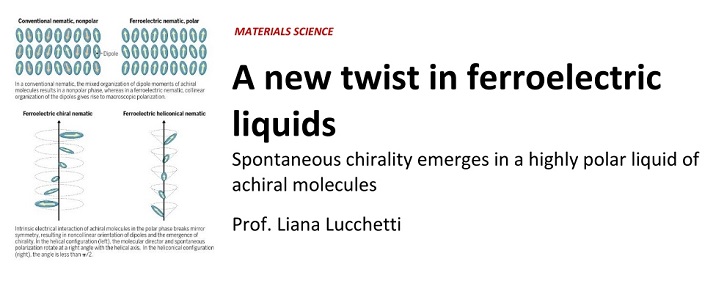Liquid crystals are of scientific interest because of their many potential applications in soft matter–based technologies. The most studied liquid crystal phase is the nematic (N), in which molecules possess orientational but not positional order. The recent discovery of the ferroelectric nematic (NF) phase, the polar variant of the N phase, demonstrated that liquid systems can have spontaneous polarization comparable to that of ferroelectric solid crystals. On page 1096 of this issue, Karcz et al. (1) report a ferroelectric nematic liquid crystal composed of achiral molecules in which strong dipolar interactions drive the spontaneous formation of a chiral phase. This demonstrates that chirality can emerge in achiral systems as a result of electrostatic interactions and that NF systems can exhibit spontaneous twist of molecular dipoles that minimizes electrostatic energy. Kumari et al. (2) also recently showed that, under proper conditions, the energetically favored ground state configuration of NF liquid crystals is chiral.
